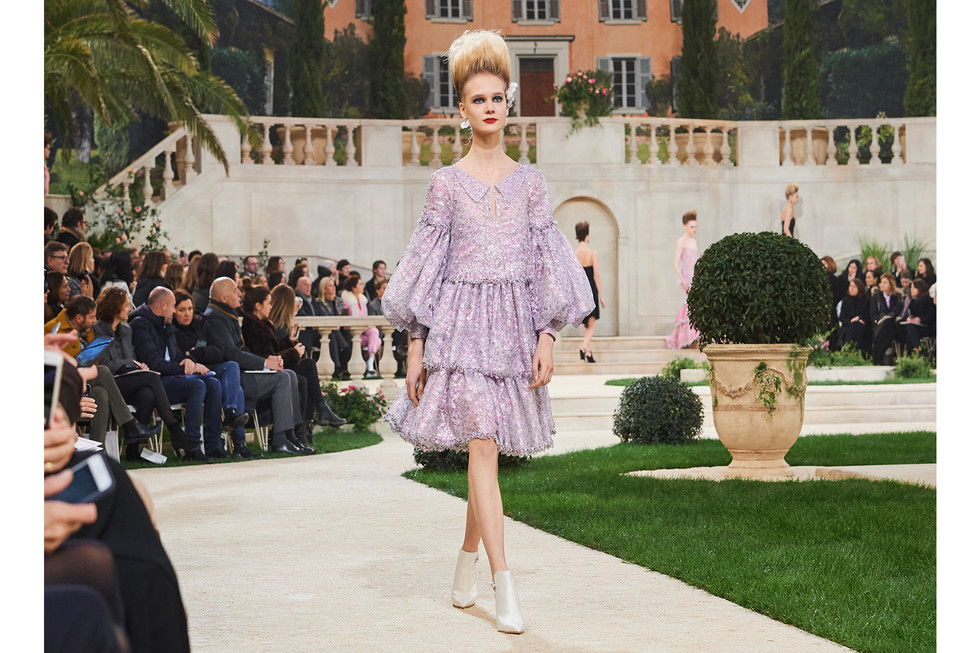Armani Privé Spring/Summer 2019
Written by Pari DamaniBeauty Look ss2019
On the notes of Bernardo Bertolucci’s The Conformist, in that world of beauty represented by Chinese lacquer and shrouded in the timeless perfection of craftsmanship, Giorgio Armani has taken the aesthetic of Art Deco as his inspiration and declared it in a collection with a lacquered effect.
Linda Cantello interprets Armani Privé Spring Summer 2019 in make-up:
“To complement a retro-inspired collection, graphic strokes of red, applied just under the eye in a painterly fashion, give a nod to the illustrations of Erté and accent the beaded cloche hats.”
The models faces were prepared with Armani Prima Glow-On Moisturising Balm, ensuring the cream was absorbed before adding the foundation, Power Fabric, to create a pale porcelain skin. Then using Neo Nude A-Contour in shade #20 to the cheekbones to sculpt and define the face. Smooth Silk Lip Pencil, #8, was used to draw a broken, straight line under the eyes. The eyelashes were curled before putting on Eyes To Kill mascara on top lashes only and to finish the look Linda Cantello used Ecstasy Shine Lipstick in #400.
Giorgio Armani’s award-winning Power Fabric Foundation range adds two new skin perfecting products, while adding 8 new colors to the original liquid foundation. Two years since the debut the Power Fabric collection is expanding with: The Power Fabric High Coverage Foundation Balm and Power Fabric High Coverage Stretchable Concealer.
Key to this sensorial formulation is the mineral perlite, which combines with soft, spherical powders to maintain a matte complexion on-the-go perfect for the urban nomad. The balm’s combination of waxes and oils, together with volatile oils, creates a soft, comfortable application, with a fine, non-greasy finish on the skin. The balm with it’s double transformation from balm to cream powder is composed of 12 velvet longwear shades. Dressing the skin and enhancing facial features, the Power Fabric line creates an effortlessly flawless complexion.
The Power Fabric High Coverage Stretchable Concealer is a combination of blendable qualities of a foundation with the coverage of a concealer - has been formulated to hide every possible type of imperfection, from dark circles to redness to blemishes. Together with the foundation, these two new products create a complete long-wear, matte, high coverage look -yet still weightless and luminous finish. The concealers concentration of pigments provides high coverage while it’s formula releases oils over time.
“Perfect for those wanting a heavier coverage, who still want their skin to remain natural looking. And for those looking for an even heavier level of coverage, a liquid cream concealer that will effectively cover imperfections, such a rosacea, broken capillaries and scars” -Linda Cantello, Giorgio Armani International Make-Up Artist.



































